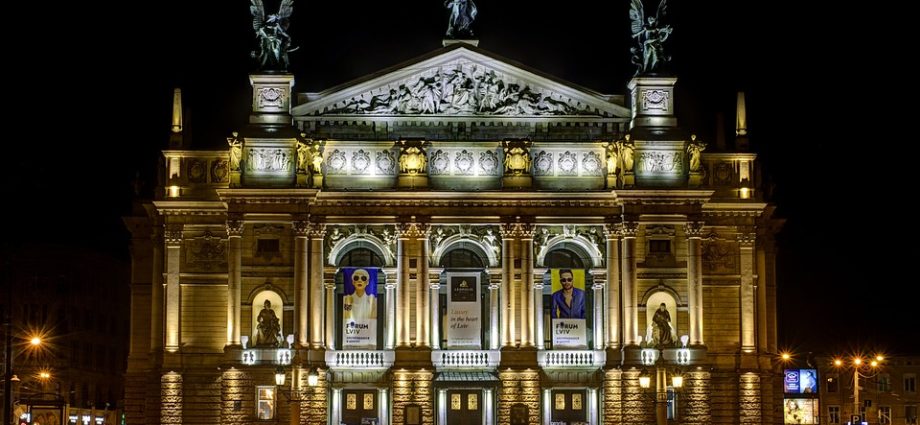Uncovering the Fascinating Traditions of Eastern Europe
Eastern Europe is a region that is rich in culture and traditions. The area comprises of countries such as Poland, Ukraine, Bulgaria, Czech Republic, Slovakia, Hungary, and Romania. The countries have a unique culture that has been influenced by various factors such as religion, history, and geography. The region is known for its distinctive architecture, food, music, dance, and festivals. This article will delve into the fascinating traditions of Eastern Europe and highlight the top tourist attractions located in the region.
Architecture
Eastern Europe has impressive architectural styles that are reflective of the region’s rich history. The architecture is a blend of Gothic, Baroque, Art Nouveau, and Renaissance styles. The cities have buildings that are centuries old and have been well preserved. One such city is Prague, the capital of Czech Republic, which is also known as the “City of a Hundred Spires.” The city’s historic center has been designated as a UNESCO World Heritage Site. The city has several notable buildings, such as the stately Prague Castle, Charles Bridge, and the historic Old Town Square.
Food
Eastern Europe is renowned for its rich and diverse culinary traditions. The cuisine is influenced by the geography and the various cultures that have inhabited the region over the centuries. Each country has its specialties, which are a reflection of the local ingredients and cooking techniques. For example, in Poland, pierogi (dumplings) and kielbasa (sausage) are popular, while in Bulgaria, banitsa (cheese-filled pastry) and kavarma (meat stew) are staples. In Hungary, the famous dish is goulash, a hearty meat and vegetable stew that is flavored with paprika.
Music and Dance
Music and dance are important components of the cultural traditions of Eastern Europe. The region has produced several noted composers and musicians such as Frédéric Chopin, Antonín Dvořák, Béla Bartók, and Franz Liszt. The dance traditions of the region are also diverse and reflect the local customs and traditions. Examples of popular dances include the polka, czardas, and hora.
Festivals
Eastern Europe has a rich festival culture that celebrates the region’s diverse cultural traditions. The festivals are typically organized around religious holidays, cultural events, and local customs. One popular festival is the Prague Spring International Music Festival, which is held in May and features classical music performances by renowned musicians. In Krakow, Poland, the annual Wianki Festival is celebrated during the summer solstice and is a vibrant celebration of music, dance, and fireworks.
FAQs
1. What are the top tourist attractions in Eastern Europe?
The top tourist attractions in Eastern Europe include Prague Castle, Charles Bridge, and the historic Old Town Square, Krakow’s Wawel Castle and Main Market Square, Budapest’s Fisherman’s Bastion, and St. Stephen’s Basilica, and Dubrovnik’s Old Town.
2. What is the best time to visit Eastern Europe?
The best time to visit Eastern Europe is during the spring and summer months (May to September). The weather is pleasant, and festivals are held during this time.
3. What are the languages spoken in Eastern Europe?
The dominant languages of Eastern Europe are Slavic languages such as Polish, Czech, Slovak, and Ukrainian. Other languages spoken in the region include Hungarian, Romanian, and Bulgarian.
4. What is the currency used in Eastern Europe?
The currency used in Eastern Europe varies from country to country. The most commonly used currencies include the Polish zloty, the Czech koruna, the Hungarian forint, and the Romanian leu.
5. Is Eastern Europe safe for tourists?
Eastern Europe is generally safe for tourists. However, visitors should exercise caution in large cities and tourist areas, especially at night.
Top 10 Tourist Attractions Located in Uncovering the Fascinating Traditions of Eastern Europe
1. Prague Castle, Czech Republic
2. Charles Bridge, Czech Republic
3. Wawel Castle and Main Market Square, Poland
4. Fisherman’s Bastion and St. Stephen’s Basilica, Hungary
5. Old Town, Dubrovnik, Croatia
6. Bran Castle, Romania
7. Wieliczka Salt Mine, Poland
8. Rila Monastery, Bulgaria
9. St. Sophia’s Cathedral, Kiev, Ukraine
10. Orava Castle, Slovakia
In conclusion, Uncovering the Fascinating Traditions of Eastern Europe is an excellent way to immerse oneself in the rich culture of the region. The area’s diverse architecture, food, music, dance, and festivals reflect centuries of tradition and history. Visitors to the region are sure to have a memorable experience exploring its many tourist attractions and discovering its many fascinating customs and traditions.
